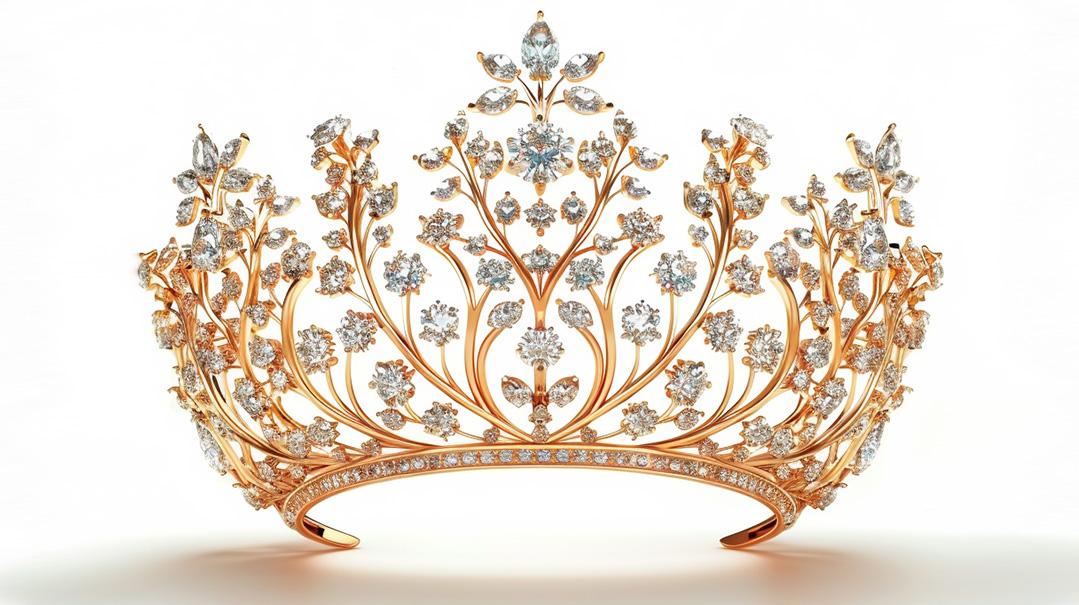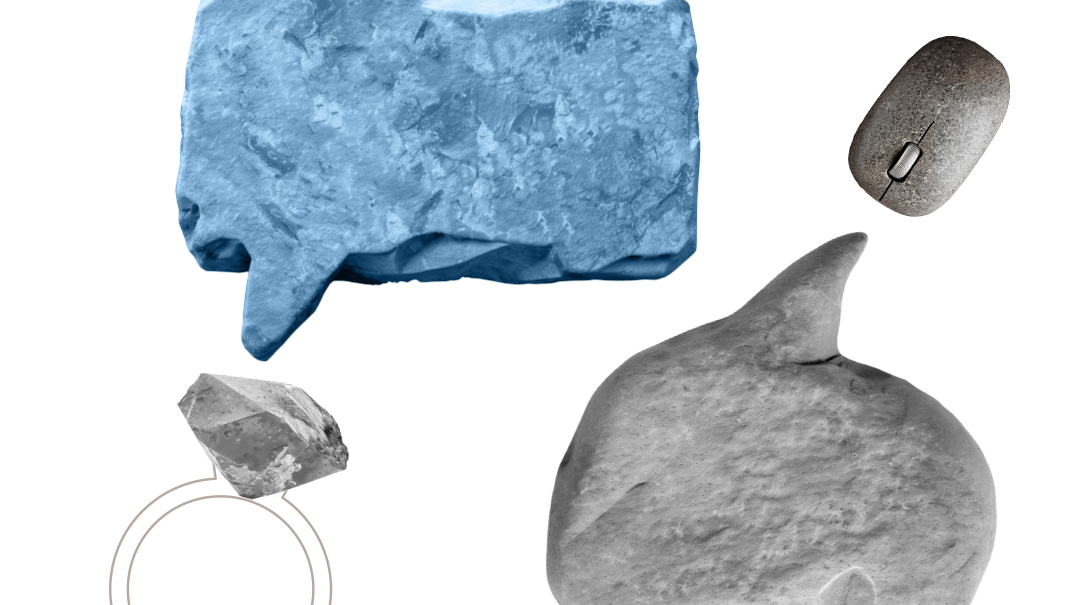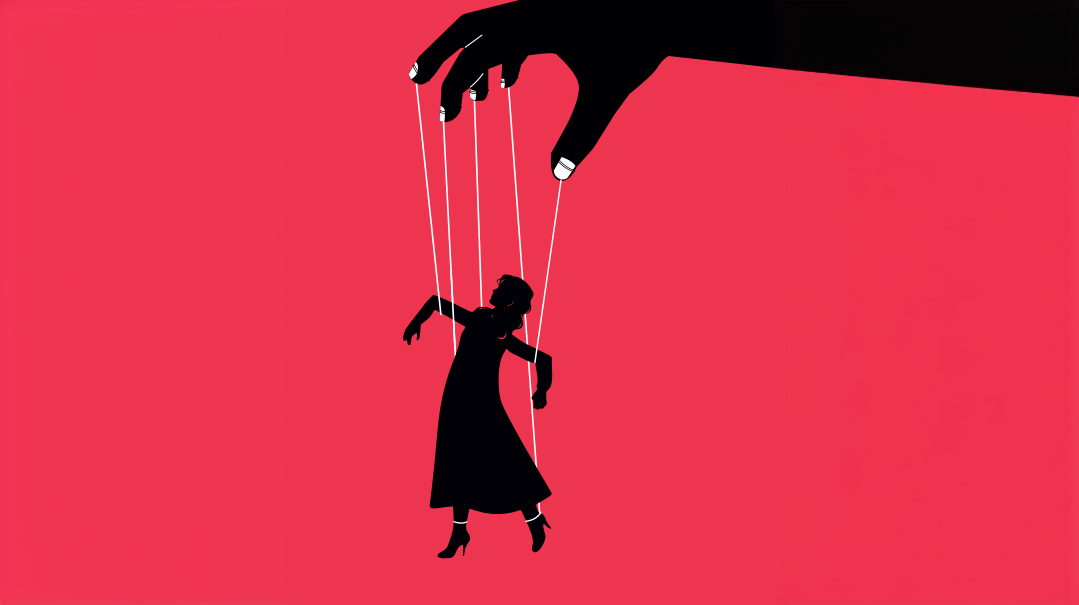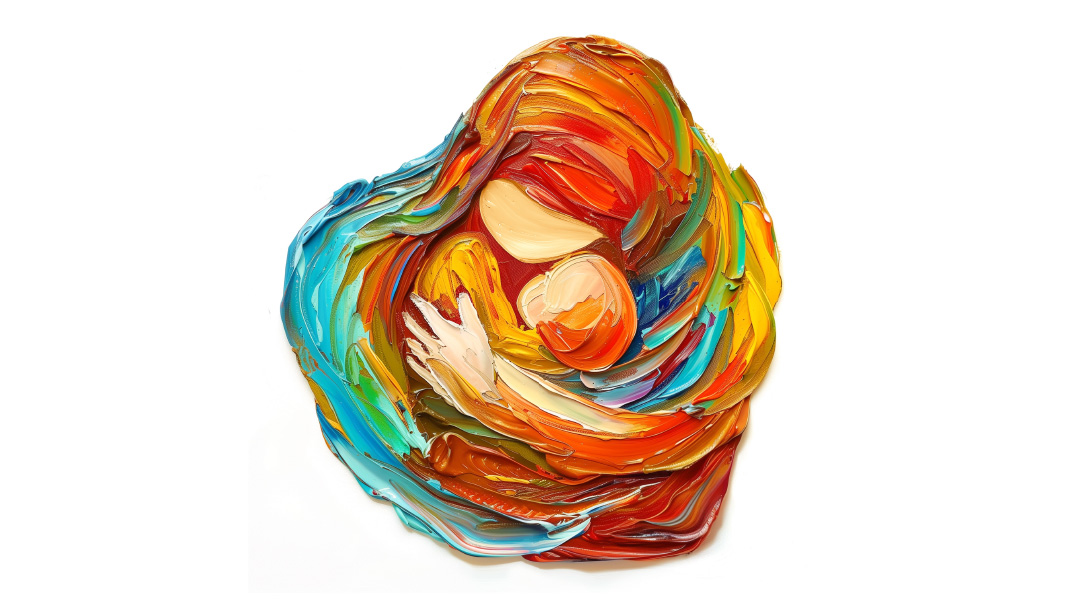Mother of Royalty
| April 16, 2024The Skverer Rebbetzin turned a village into a kingdom

As a newlywed, Rebbetzin Chaya Chana Twersky a”h was transported from the bastion of Vizhnitz chassidus in Bnei Brak to the wilderness of New Square. There, together with her husband, the current Skverer Rebbe, she raised a majestic family, turning a fledgling village of survivors into an empire, while nurturing her children, grandchildren, and community with a mother’s love
IN 1959, two weeks after her wedding to Rav Dovid Twersky shlita, the current Skverer Rebbe, 16-year-old Rebbetzin Chaya Chana left bustling Bnei Brak for New Square in faraway New York, to the isolated village her father-in-law had established.
“Nisht leicht, it wasn’t easy,” the Skverer Rebbe says about his young bride’s move, which brought her so far from her “artzecha umibeis avicha.”
At the time, New Square was comprised of 70 survivors cobbling together a life after the Holocaust. There was no one her age; the residents were at least a decade older than she. The village was still unpaved, and newly built Cape Cod houses stood in an unsteady circle at the center of the development. She was lucky if her elegant shoes weren’t scuffed by pebbles and tree roots; most of the time she sank into the dirt and, when it rained, mud.
But far from the place she called home, she brought the grandeur of chassidish royalty across the world and turned a fledgling, remote village into the majestic kingdom it is today.
A Sweet Start
Rebbetzin Chaya Chana was born in 1943, in Dej, Hungary, to Rav Moshe and Leah Esther Hager, son and daughter-in-law of the illustrious Vizhnitzer Rebbe, the Imrei Chaim ztz”l. When she was just a year old, her parents, seeking to escape the Nazi inferno, paid a smuggler to take them across the border to Romania. As they neared the border, young Chana’la, possibly sensing the tension, began wailing inconsolably. The guide grabbed the wailing infant, ready to choke her to death. “She’s endangering the entire group. I can’t take the risk,” he said.
Her parents promised to pay more, a full ransom, anything for the life of their daughter, but the guide was unmoved. Frantically searching for something, anything, someone in the group found a sugar cube and gave it to her father. He put it in Chana’la’s mouth, and she sucked, placated, the crisis averted.
The family made it safely out of Europe and settled in Eretz Yisrael. The Imrei Chaim and his Rebbetzin joined them a few years later. Harav Moshe headed the Vizhnitz Yeshiva in Bnei Brak, and went on to write a sefer, the Yeshios Moshe, the name by which he became known. The Rebbetzin’s childhood was spent in the sweetness of sitting at the feet of greatness.
At one point, the Yeshios Moshe was invited by a chassid to visit the diamond bourse in Antwerp. “You know? I have a diamond factory, as well,” he told the chassid. “My entire life is dedicated to polishing diamonds — human ones. Your diamonds remain stone, while my diamonds light up the world with Torah.” So dedicated was he to spreading the light of Torah and chassidus, that even during the 1948 War of Independence, when bombs were dropping from overhead, he would walk to yeshivah every day, while his wife and young children hid in the relative protection of the stairwell.
“I don’t care that you should become chassidim of Vizhnitz,” he’d tell his students, “as much as I want you to become chassidim infused with a love for Torah and a connection to Hashem.”
The diamonds in his factory weren’t the ones he wore in his crown; his diamonds at home were infinitely precious to him, and he poured much love into his daughter Chana’la and her younger siblings. Every Friday night, the children went over to the Imrei Chaim after davening to wish him Git Shabbos. Her father stayed home, learning, until the children came back, after which they had a quick seudah. He would sing Shalom Aleichem, Eishes Chayil, Menuchah V’simchah, and Hilichuch — shorter songs, because he was in a rush to make it to his father’s tish, which he was makpid never to miss.
On Shabbos morning, the Imrei Chaim didn’t hold a tish, so the seudah was longer, and the family spent it in song and connection with each other and the Borei Olam. His talmidim would want to come over to sing nigginum and zemiros, but the Yeshios Moshe insisted they come after the seudah; he wanted his daughters to be at the center of the Shabbos seudah.
The Yeshios Moshe was involved in all aspects of Chana’la’s chinuch. He enrolled her in Harav Sharansky’s Bais Yaakov, which he chose because it had a male dean, and he could personally inquire after his daughter. Rav Sharansky’s office was two streets away from the yeshivah, and his office was directly off the street, not inside of the school, so the Yeshios Moshe stopped by on a regular basis. Then there was the morning when he asked the local school supplies store proprietor to open early, and he came to the store and helped her pick out a schoolbag.
He also learned seforim with young Chana’la. This early tutelage was the cornerstone of Rebbetzin Chana’s thirst for and familiarity with the most profound seforim, which she immersed herself in throughout her life.
When her shidduch came up, her grandfather told her, “I’ve been keeping an eye on this bochur since he was much younger. I wanted him for you.” Her uncle, the Toldos Mordechai, the Vizhnitzer Rebbe of Monsey ztz”l, and son-in-law of the previous Skverer Rebbe, Rav Yaakov Yosef Twersky ztz”l, was the shadchan.
Chana’la was all of 16 years old.
“I’m young,” she told her father. She felt connected to her family, and to the Vizhnitz court, and this shidduch meant she’d be moving halfway across the world to the Skverer court. But she felt that if her grandfather wanted this for her, then this was her tachlis in life. And so, trusting her grandfather, she got engaged.
A Home of Her Own
The engagement period was spent in a flurry of activity. In preparation for moving to the States, Chana’la learned English.
The wedding took place on Tu B’Av in the Shikun Vizhnitz in Bnei Brak. It was a historical event, a great simchah that just a decade and a half after the War signified the Jewish Nation would not only survive, but rebuild.
And then it was time to move across the ocean.
Her parents and grandfather, the Imrei Chaim, came to the airport to see her off. “We stood at the gate, and my parents couldn’t say a word from the emotion that choked them. I couldn’t say a word either,” the Rebbetzin recalled.
While household phones had become standardized in the states, in Eretz Yisrael telephones were the exclusive domain of heads of states or heads of chassidus. Still, her father refused to own a phone. Foretelling the sentiment of our rabbanim today about technology, he said the phone would distract him from learning and cause people to waste countless hours in trivial talk.
Instead, he urged his daughter to write letters twice a week. “In retrospect, that enabled us to have an archive of all the important events in our lives,” she and the Rebbe both said.
In New Square, the mail, and even groceries, were dropped off at the entrance of the village. Every day, the Rebbe’s gabbai would climb the hill to bring back the mail. The Rebbetzin peered out of the window each afternoon, waiting for a letter from home.
Chana’la, my sweet daughter, the Yeshios Moshe wrote in one. You have time, you could write with detail on each aspect, because we are interested in knowing everything about you.
And in another: Dear Children, our hearts yearn for you and we can’t focus on anything else. We think about you constantly. Write often, you’ll simply be buying Olam Haba.
When her son, Reb Aron Mendel, was born, a telegram was sent to her parents, informing them of the mazel tov.
“Write more,” the Yeshios Moshe responded. “How is the yoledes?”
The yoledes had been prepared for the job of raising children her entire life. “My grandfather writes that according to the Bnei Yissaschar, every mitzvah should be done in thought, word, and action. And because chinuch is a mitzvah, a parent should think about, speak about, and take action in raising our children,” the Rebbetzin once said.
“He also said that the most important aspect of raising children is our actions. Children see what we do, they know that we’re working on ourselves much more than we say we do. Nevertheless, good intentions aren’t enough. We have to take action.”
She understood that one of the most important tools for raising children was keeping them close by and spending time together. The Rebbe didn’t like the idea of children riding bikes outside, so the Rebbetzin let them ride them on the porch and inside the house, knocking into the walls and having a lot of fun. Years later, when it was time to renovate the house and remove the wood chair rail paneling that had become hopelessly out of vogue, she was hesitant to rip them off the walls. “These panels allowed my children to have hours of fun riding around the house. These were the buffers,” she said.
She kept her children busy and satisfied at home because she said, “A parent should always know where her child is.”
She’d share the nachas she had from her children with her parents and grandparents in letters that crossed the ocean every week. In one of the letters she received from the Imrei Chaim of Vizhnitz, he writes, “Your mother showed me a picture of your sweet son. Why don’t you send one to your grandfather and grandmother, as well?”
The Rebbetzin poured love freely into her children. She’d tell them stories of tzaddikim to convey knowledge and wisdom. She listened to them intently, and every child, child-in-law, and grandchild knew that her heart was fully open to them. They all felt close to her because they’d spend time together, simply connecting. She took them on Chol Hamoed trips at a time when there was no crowd.
She wanted her children to know that there will be things that are a no, and yet they’re not missing out in life.
Her father, too, would ask her, “Did you go out with the children?” And she did.
She was a mother, after all.
Becoming the Rebbetzin
She was mother to a chassidus that, in her time in Skver, grew from a young, 70-family village to one with thousands of residents. She was mother to the many guests and family members who would come and stay. And she was mother to all the mothers in the community, those who gave birth, those who made simchahs, and those who yearned to.
One big project she undertook was the founding of Aim B’Yisroel, a mother-and-baby home where postpartum women would be nurtured and regain their strength. Nothing but the most elegant fittings were installed, so that years down the line, when a new mother would arrive to rest up with her newborn, the couches would be comfortable, the carpets plush, and the chandeliers stately.
The Rebbetzin would visit the kimpeturins every Friday. She’d bring them a personal gift — a siddur. She’d ask after each woman: Who was she? How was she?
Incidentally, when the siddurim she gifted them were first being prepared, she was asked to personalize them with her letterhead. She replied that she didn’t have a personal letterhead. Thousands of handwritten letters had left her desk, all penned in her clear script, all signed with her unassuming “Chana Twersky” signature. She didn’t see herself as an official, even as she officiated in her capacity as Rebbetzin for hours every day.
“I never became a rebbetzin,” she said. “The rebbe became Rebbe.”
“You’re the queen,” a chassid once remarked to her.
“I’d have to live in England for that,” she joked.
When she learned that Rebbetzin Tzipora, mother of the previous Skverer Rebbe, had her own official stationery and letterhead, she acquiesced, and Aim B’Yisroel proudly bore her title, not just her influence.
Those women who yearned to be mothers — whether married women waiting to be blessed with a child or single women waiting for a shidduch — had her entire heart. She’d listen to a woman talk about her deepest wishes, and her sigh was rending. There were times when she was mazkir someone’s name to the Rebbe again and again, asking him for a brachah for them, until they saw a yeshuah. But unsatisfied with leaving the work to the Rebbe, after meetings that were especially heartrending, she’d open her Tehillim and just beg.
Children’s safety was her top priority. She once saw a baby sitting outside in his carriage, and the strap was loose. The baby was slipping forward and the Rebbetzin quickly rotated the handle of her window and yelled out, “Strap the baby in the carriage!” Another time, she was leaving New Square when a child dashed across the road. “Stop the car,” she told her driver. She rolled down her window and admonished the child with uncharacteristic urgency, “You need to stay on the sidewalk.”
She was adamant that people dressed respectably. “A chussid should be regal,” she said. Others remember how deeply she cared about spelling, grammar, and neat handwriting. In all three languages — Hebrew, Yiddish, and English — she was fluent. Writing correctly and neatly demonstrates respect, she said.
The Rebbetzin deeply believed that the values of tzniyus and aristocracy are one and the same. “Girls are afraid that if they dress modestly, they’ll start looking pathetic. The opposite is true. A modest woman is one who looks put together and beautiful. The real fear about modesty is what others will say. Will they still appreciate your taste in fashion if you’re dressed b’tzniyus?” She used to laugh about the fact that people cared so much about other people’s opinions when it came to clothing. With more important matters, like health, would we ever trust that enigmatic “everyone”? So why did we trust them with fashion?
She was a prime example of sophistication. Her tichel was tied in a unique fashion, pulled together in the center with a brooch. Her clothing was beautiful. It was clear that she was a rebbetzin, both in terms of her elegance and her tzniyus.
This message about the true beauty, strength, and dignity of the Jewish woman featured prominently in her speeches. She was often invited to speak, both in New Square and beyond. Having been formally trained in Torah learning, she could pull together a deep Torah discourse very quickly.
She had her own personal library upstairs in the succah room of her house with a well-appointed seforim shrank filled with chassidishe seforim. She loved learning and would pore over seforim, making notations with sticky notes, and compiling her sources into one cohesive thought. The seforim would pile up in a neat tower as she prepared and wrote notes, weaving together a speech that was relevant to women and young girls all over the world. “She could have just dipped into her vast knowledge of Torah,” her daughter said during the shivah, “but she liked to prepare a fresh speech each time.”
The Rebbetzin spoke to kallahs before they got married and high schools and seminaries who held their shabbatonim in New Square. Her message was to be proud of who you are. She’d also raise a question many women have, whether consciously or more insidiously: “If you want your children to be eidel, how can you instill pride and strength in them? Wouldn’t that be counterproductive?” But she’d explain that knowing how dignified, how important, how royal we are, lends itself to refinement. “The Rebbe always quotes from Reb Aharon Karliner, that the biggest sin is when we forget that we are bnei melachim,” she would say. It was a message she personified.
Head of the Kingdom
Although she liked to joke that she was no rebbetzin, she presided over a kingdom of Torah. Living on the top floor of a significant campus, surrounded on one side by the kollel, on the other by the yeshivah, right in front of one of the largest shuls in America, and on top of the Rebbe’s reception room, there was an entire operation spanning staff and community members. At the nucleus was her home, a private domain over which she presided, cooking nutritious meals, cleaning and organizing, and spending time with her children. She kept the house orderly, tasteful, and warm.
Hers was an open house, and the doors were never locked, except when she was away visiting her parents in Eretz Yisrael. The Rebbe had a kitchen fully staffed with an in-house chef and his assistants, and if she were so inclined, she could have relied on that kitchen for all her needs. But she liked to be involved in the culinary output of her home and serve her guests. And there were always guests. She served them fresh and delicious food, dishes she was famous for, such as her fish and fried kreplach on Shavuos, or her niss beigelach, hamantashen, and nunt on Purim. At eight o’clock every Friday morning, her challos were already cooling on the counter. One local mailman, Jewish, though not observant, had a fresh challah waiting for him inside the mailbox.
Even though the Rebbe ate from the “Rebbe’s Kitchen,” she asked the chef to maximize the nutritional value of his food despite the limited ingredients the Rebbe permitted himself to eat. The Rebbe’s minhag was that when visiting mekomos hakedoshim, he wouldn’t eat, only drink beforehand. She knew that when on a trip to Russia to the gravesites of his forefathers, the Rebbe wouldn’t eat until late in the day, so she advised the kitchen to press fresh vegetable juices.
When it came to the Rebbe’s laundry, the Rebbetzin refused to delegate the task. She also eagerly took on the role of making Pesach, and she’d start two months in advance.
She filed away the numerous wedding invitations she received in order of the date and location. Every morning, she laid out that night’s wedding invitations on her table, and booked a driver. She’d travel the Tristate area to five different weddings in one night. Late at night, she returned home to join the eirusin that usually took place in the Rebbe’s court, and she’d stand with the kallah at the mechitzah until the plate was broken.
The Rebbetzin gifted new couples with a silver becher, that she handpicked herself in Mazel Tov Gift shop. Anytime she wanted to show appreciation, she’d send a gift with a handwritten note attached. Once, the choir members who provided entertainment at a simchah she hosted were surprised when they received a miniature silver harp, in appreciation for their contribution to the event. The women who volunteered in the Rebbe’s kitchen preparing borscht before Pesach and huluptches before Succos were surprised to receive a phone call thanking them for their time. She always acknowledged each person’s presence, time, and contribution.
Purim was a large-scale operation. Throngs of people brought mishloach manos to the Rebbe in his downstairs reception room. Others brought mishloach manos upstairs, to the Rebbetzin. She kept a running list of all the mishloach manos she received.
Notwithstanding the flood of revelers who came through her door, the Rebbetzin commented on each child’s costume. The year after Harav Ovadia Yosef ztz”l passed away, a costume of the Rishon L’tzion was popular. One of the children came dressed in a robe, turban, and sunglasses, and she said to him, “I have to tell you a story I heard from my father. A young bochur came into a seforim store and asked for a sefer. The owner handed him a ladder and told him to find it high up on the shelf. The next morning, the storekeeper found the boy still standing on the ladder, learning from the sefer. The boy was Harav Ovadia Yosef. You should grow up to be like him,” she told the costumed child.
With her feminine intuition, the Rebbetzin knew that one of the ways to create a sense of community among the women was through hosting elegant events. Every Simchas Torah and Shavuos, when hundreds of people poured into New Square to spend Yom Tov with the Rebbe, the women were invited to a kiddush in the Rebbetzin’s home, and later, as the community grew, in the kollel. Each woman got a beautiful welcome, and a souvenir to take back home.
Other events the Rebbetzin hosted included fundraisers for the yeshivos, schools, and kollelim, which the Rebbetzin personally prepared for, choosing the decor and the menu. She also individually invited every person, making hundreds of phone calls in the days leading up to the event. This was a role she inherited from her mother-in-law, Rebbetzin Trana. The elder Skverer Rebbetzin hosted a yearly party to benefit the mosdos. One year, she was honored at the event and received a silver bowl as a gift. She handed it to her daughter-in-law and said, “This is for you.”
Rebbetzin Chana understood that it wasn’t just the bowl she was giving over, as much as the responsibility for the galas and events.
A Noblewoman
Rebbetzin Chana passed away this past February, sending the chassidish world into mourning, including her brothers, the Vizhnitzer Rebbes, Rav Yisroel Hager and Rav Mendel Hager; her sisters, the Satmar Rebbetzin, the Belzer Rebbetzin, and Rebbetzin Erenster; her four sons, the great scions of Skver; and her two daughters, the Rachmastrivker Rebbetzin and the Vizhnitzer Rebbetzin. She was laid to rest in Skver, next to her daughter the Zvehiler Rebbetzin a”h, and her mother-in-law, Rebbetzin Trana.
At a long table with microphone stands, the Skverer Rebbe shlita and his four sons sat shivah for the beloved Rebbetzin. One of their visitors was the Machnivker Rebbe. He sat facing them in an armchair, searching for the right words to describe the Rebbetzin.
How do you describe such a wife and mother?
“Mother” is such an all-encompassing role. She births children, wakes up at night for them, listens to them, is present for them — endless giving and loving. Rebbetzin Chana was the mother of a malchus. Nestled in her arms like an infant, a community grew into an empire.
“Eishes chayil mi yimtza,” the Machnivker Rebbe finally said, as hundreds of young men sitting on the parenches, tugging at their still-dark beards, hung on to every word.
Because the first words of Eishes Chayil encapsulate who the Rebbetzin was: a noblewoman.
(Originally featured in Family First, Issue 890)
Oops! We could not locate your form.







